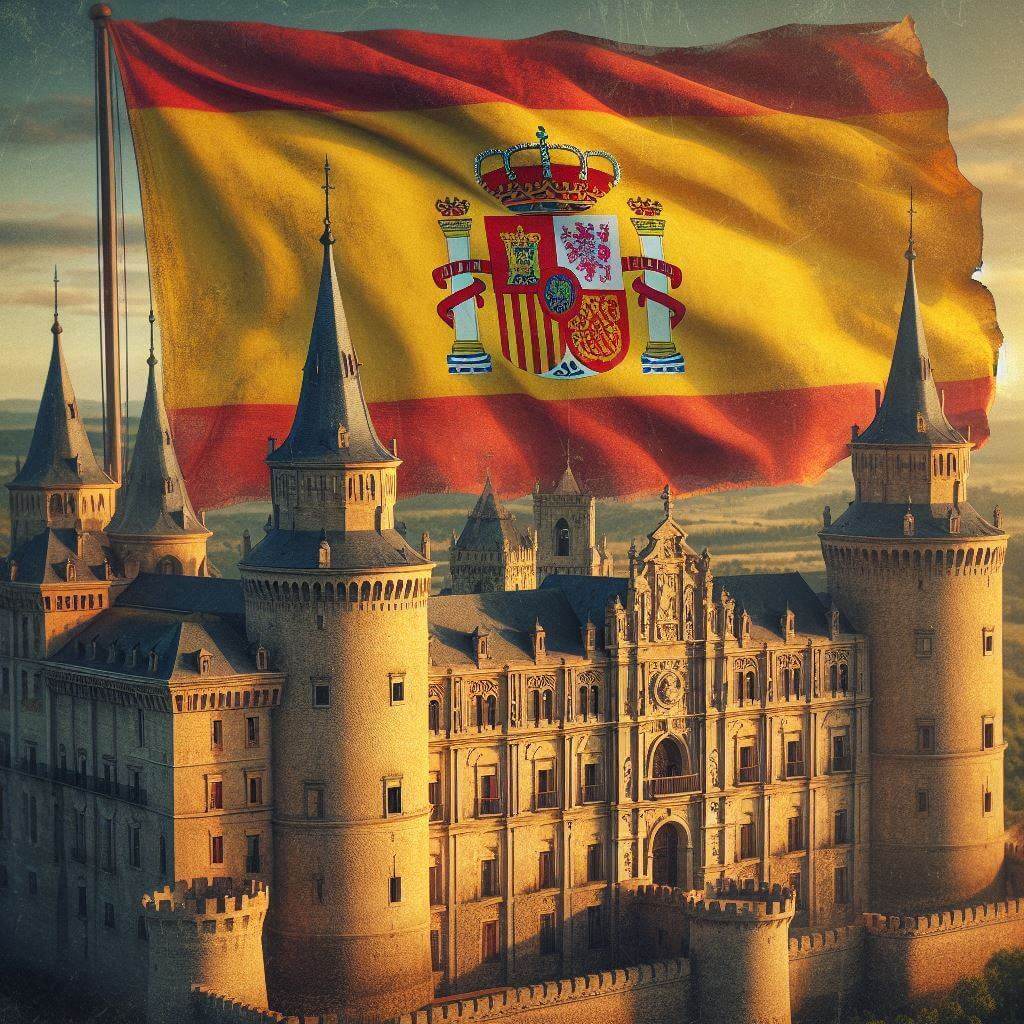The flag of Spain, known as "la Rojigualda" (the Red-and-Weld-Colored), consists of three horizontal stripes: red, yellow, and red, with the national coat of arms off-centered towards the hoist side on the yellow stripe. This iconic design embodies Spain's rich history and cultural heritage.
Spain information
| National Flag Day | October 12 |
| Sovereign state | Yes |
| Official name | Kingdom of Spain |
| Capital | Madrid |
| Population | 46,727,017 |
| Area | 505,992 km² |
| Currency | Euro (EUR) |
| Language | Spanish |
| Continent | Europe |
| Region | Southern Europe |
| Subregion | — |
| Borders | Andorra, France, Gibraltar, Morocco, Portugal |
| Timezone | Central European Time (CET) UTC+1, Central European Summer Time (CEST) UTC+2 |
| Calling code | +34 |
| Top-level domain | .es |
History of the Spanish Flag
 The current design of the Spanish flag was officially adopted on December 19, 1981, following the restoration of democracy after the Franco era. However, its basic red and yellow color scheme dates back to 1785 when it was introduced by King Charles III. The design was chosen for its visibility at sea, distinguishing Spanish ships from those of other nations.
The current design of the Spanish flag was officially adopted on December 19, 1981, following the restoration of democracy after the Franco era. However, its basic red and yellow color scheme dates back to 1785 when it was introduced by King Charles III. The design was chosen for its visibility at sea, distinguishing Spanish ships from those of other nations.
Symbolism and Design of the Spanish Flag
The Spanish flag's design is rich in historical and cultural symbolism:
- The red and yellow colors are derived from the historical colors of the Crown of Aragon and the Kingdom of Castile, two of the most influential kingdoms in the formation of modern Spain.
- The national coat of arms on the yellow stripe includes several elements:
- Symbols representing the historical kingdoms of Castile, León, Aragon, Navarre, and Granada
- The Pillars of Hercules, representing the Strait of Gibraltar
- A crown symbolizing the Spanish monarchy
- The motto "Plus Ultra" (Further Beyond), reflecting Spain's historical global exploration
Usage and Significance of the Spanish Flag
 The Spanish flag is a powerful symbol of national unity and identity. It is displayed on government buildings, during national holidays such as National Day on October 12, and at international events. The flag represents Spain's rich cultural heritage, its constitutional monarchy, and its position as a modern European nation.
The Spanish flag is a powerful symbol of national unity and identity. It is displayed on government buildings, during national holidays such as National Day on October 12, and at international events. The flag represents Spain's rich cultural heritage, its constitutional monarchy, and its position as a modern European nation.
Interesting Facts About the Spanish Flag
- The Spanish flag is one of the oldest in Europe, with its basic design dating back to the 18th century.
- During the Spanish Civil War (1936-1939), different factions used variations of the flag, reflecting the political divisions of the time.
- The exact shade of yellow in the flag is officially defined as "weld yellow" (amarillo gualda), named after the weld plant used historically for dyeing.
- Spain's autonomous communities and cities have their own flags, which are often displayed alongside the national flag, reflecting the country's regional diversity.